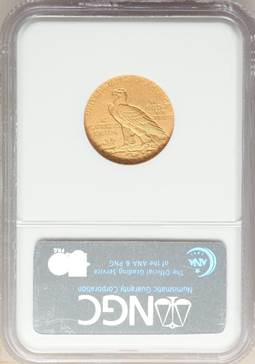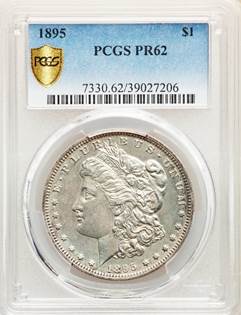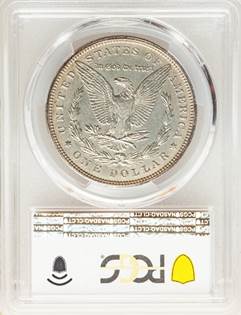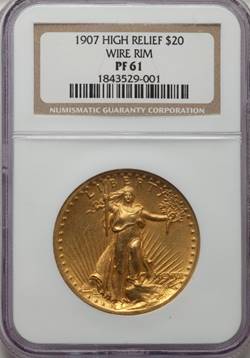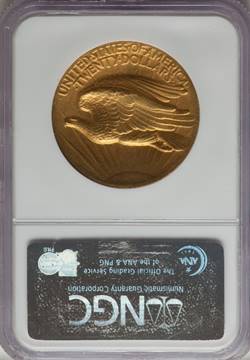First Year Matte Proof
The innovative, incuse Indian design by Bela Lyon Pratt was introduced on the quarter eagle and half eagle in 1908. The Philadelphia Mint found it impossible to polish the dies for the new designs to produce the old brilliant finish used on proofs of earlier years, so a new sandblast finish was adopted. The coins were struck from specially prepared dies and subjected to sandblasting with a coarse grain of sand, while being held with a glove. The sandblast finish gave the coins an artistic medallic appearance, but contemporary collectors preferred the old brilliant proofs and orders for proof sets were anemic. The Mint produced 500 examples of the new gold proofs in 1908, but only 167 were distributed. The remaining coins went unsold and were melted after the close of the year. Of course, present-day numismatists appreciate the sandblast proofs for their artistic quality and elusive nature.
We do business the old fashioned way, we speak with you. Give us a call for price indications and to lock trades.
Offered at $22,000 delivered
(800) 257.3253
9:00 AM – 5:00 PM CST M-F
Private, Portable, Divisible Wealth Storage
Price is based on payment via ACH, Bank Wire Transfer or Personal Check.
Major Credit Cards Accepted, add 3.5%
Offer subject to availability.

